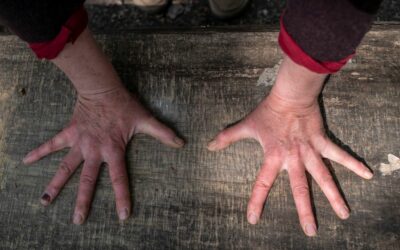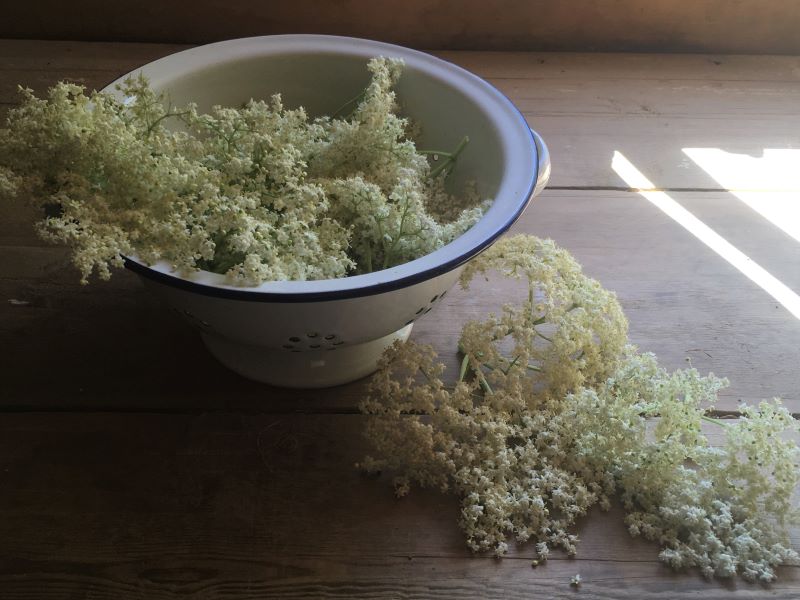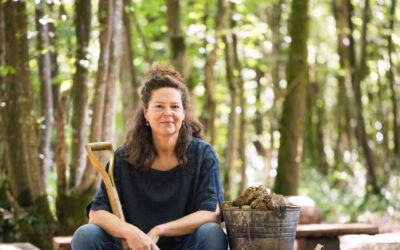I talk with the founder of Plants & Colour, Flora Arbuthnott, about how I approach working with wild gathered materials in my creative practice.

Intimacy with the landscape, the living world, plants, earth, other creatures, has always been meaningful to me as a place of connection and belonging.
So it feels completely natural to create with these materials. On an aesthetic level I feel a kinship with the textures and colours; with handling and manipulating clay and plant fibres.
I’m also a gardener, growing flowers and fruit, and caretaking the places where I gather my materials.
It’s a need, a compulsion to work and create with my hands, an existential requirement. I think it’s in our DNA as humans to use our hands to create with the natural materials we find around us.
I feel strongly about not adding more stuff to the world, so working with materials and processes which are essentially low impact and degradable, pretty much a circular system, sits comfortably with my ecological concerns.
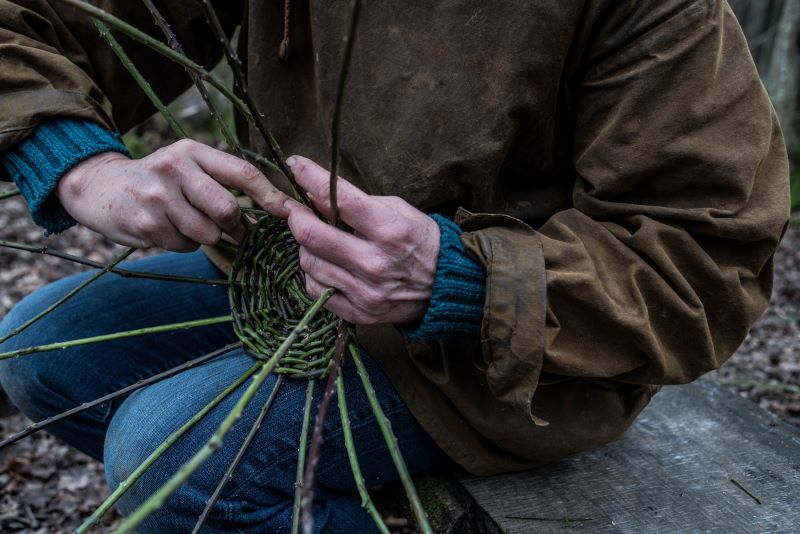
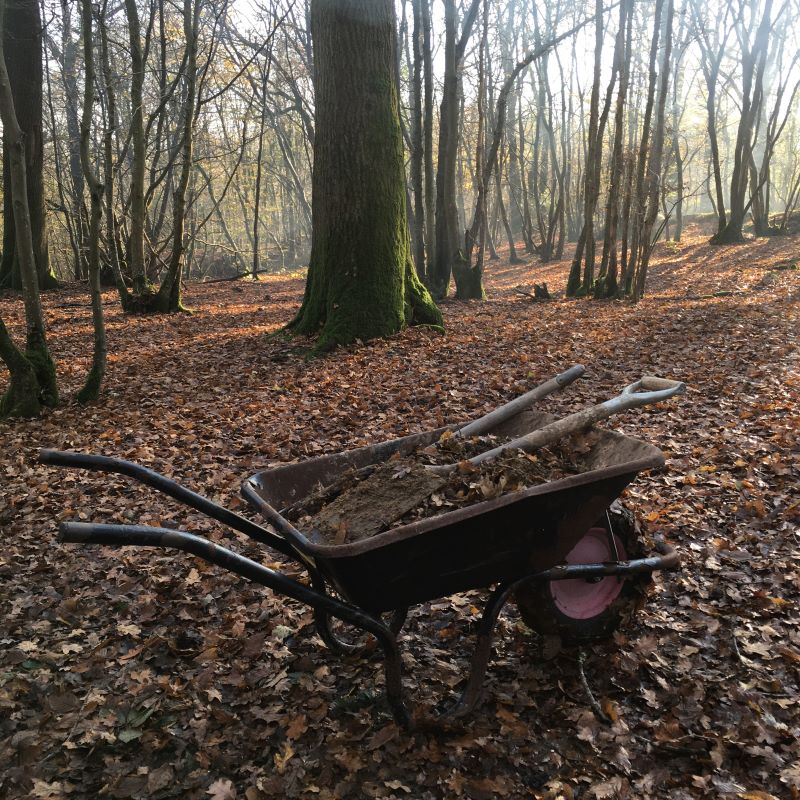
My practice means spending time outdoors in the natural world, often wandering and observing, it feels like home. I pay attention to the plants, the tress and sky; animals around me, the birds and the insects.
I live in Sussex at the foot of the Downs; I grew up near the Chilterns, which are also chalk; the ecosystems of both places are really similar, so I’m familiar with the plants, I’ve known them all my life. I’ve spent a lot of time in the last 10 years exploring which plants can be used for weaving, extracting fibres, creating forms.
The sensory experience of the whole process is a strong feature in my practice.
In Sussex we’re also part of the Weald, an area rich in clay. I’ve sampled clays from many different sites and found ones that have good plasticity and integrity, and are clean enough to work with straight from the ground.
I hand build, mainly using the coiling technique, in my small garden studio. I fire my pieces outdoors in the woods, either open firings or clamp kiln firings, producing low fired earthenware.
The process is physical and elemental, it mirrors the very origins of ceramics- earth, wood and fire. It’s unpredictable and I like this, removing control and allowing all the variables to come into play- the weather, the firewood, the clay that came straight out of the ground only a few metres from the fire.
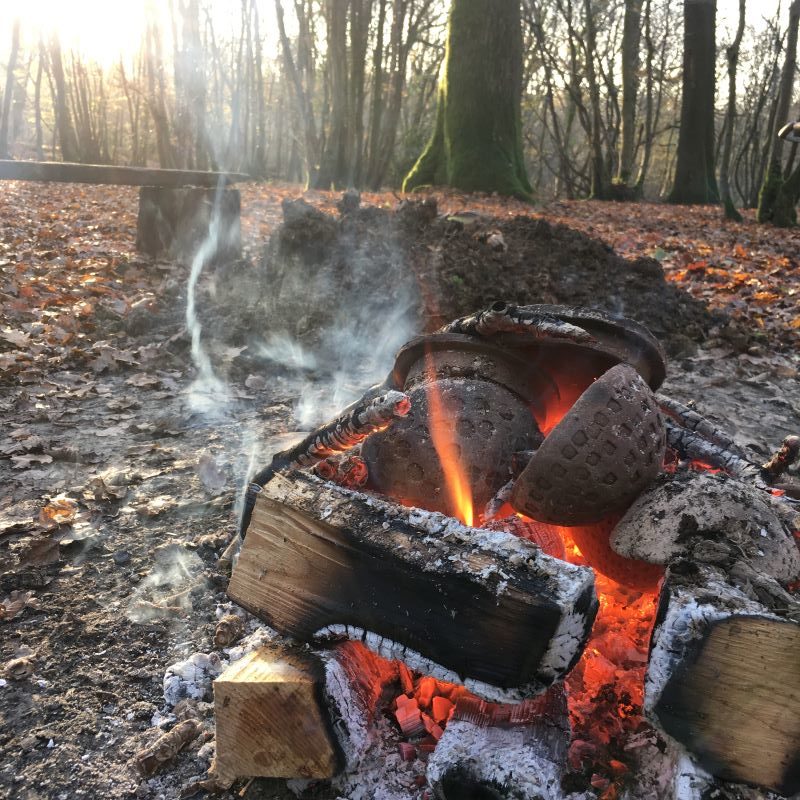

Plant-wise, I work with lots of different ones, including bramble, bark, rush, reeds, grass, wild rose, various leaves. I mostly forage my own materials but sometimes source from other people who harvest in larger quantities.
I live in a densely populated county and many of my materials come from marginal places. These places are under threat from cultivation, development etc. I caretake as I harvest, to support the plants’ health and vigour.
There’s a certain insecurity inherent in relying on foraging my materials- availability varies from year to year depending on the growing conditions. Sometimes I’ll go to gather and find that everything’s been unexpectedly cut back by a landowner, and I go home empty handed.
There’s a mind map in my head of plants around where I live; it probably extends to about a 20-mile radius, but wherever I go I’m always looking around at what’s growing where, and how it’s doing.
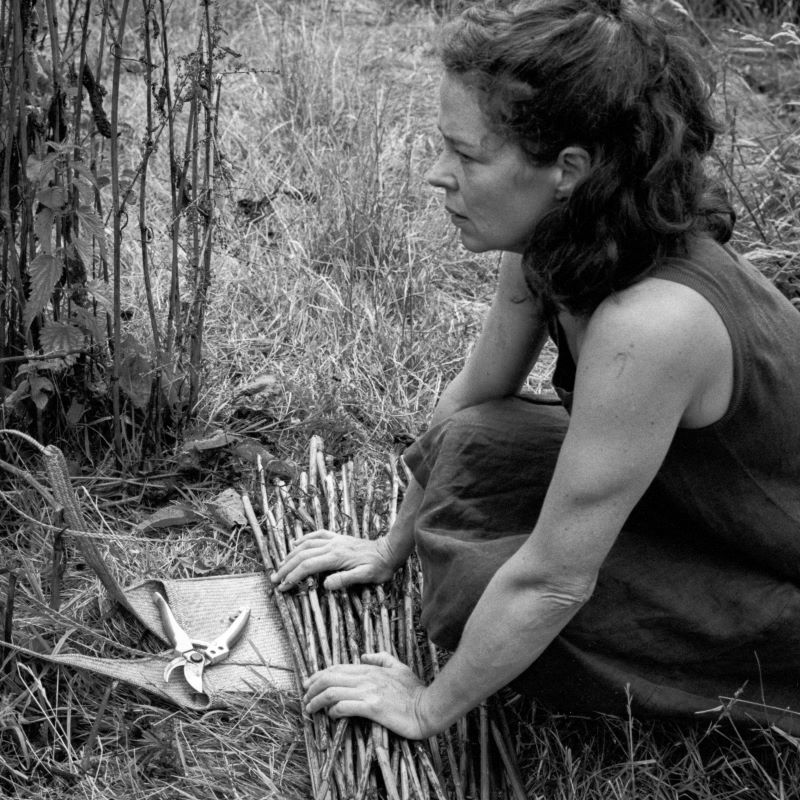
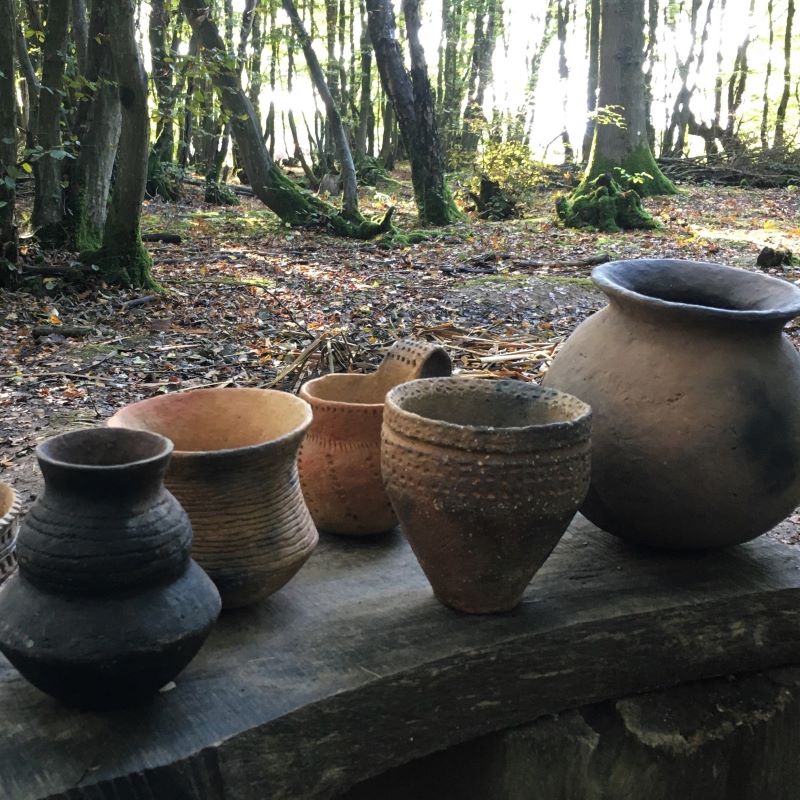
The dialogue between myself, my hands, and the materials, fascinates me. There’s often a good deal of trial and error involved in the process of making, as I get familiar with it. Sometimes I make series of pieces, often I make pieces that are one-off, responding to the particularities of the material.
I’m drawn to making vessel forms. There’s a certain fullness and stillness that resonates, creates a sense of presence. The space within, a fertile void; the outer form a skin under tension: a dynamic between the two that is compelling.
Sometimes when I’m making, I have an almost visceral sense of being part of a lineage, a continuum of makers that stretches back to distant palaeolithic times; it’s mysterious and moving.
In recent years I’ve made a couple of large-scale site-specific sculptural pieces, using materials foraged on site: a 7-metre-high archway in ancient woodland, and a suspended netted structure made of 70 metres of hay rope, both at Wakehurst, Kew. I relished the challenge of the open briefs of those works, responding to the place and the plants.
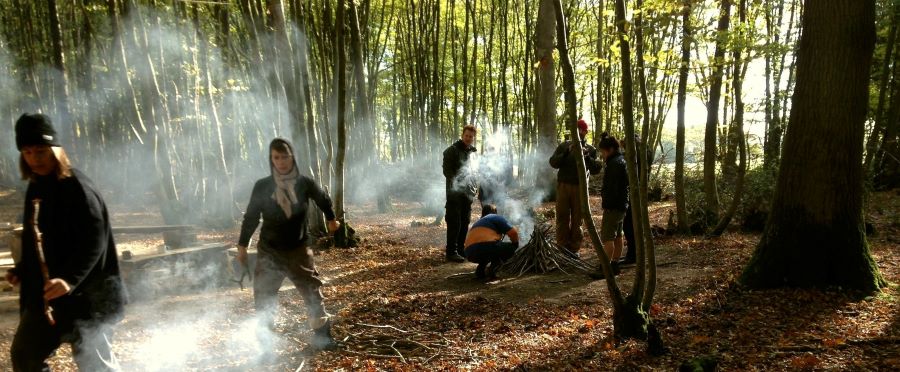
My woodland courses season runs April- November, in Sussex (details on the courses page of my website). I sell work through my website shop once or twice per year, and sometimes show work elsewhere. I send updates about all this via a monthly-ish email, which you can sign up for.
A version of this post was originally one of a series of blogs first published on the Plants & Colour website in 2021, featuring inspiring makers who work with local natural materials.
